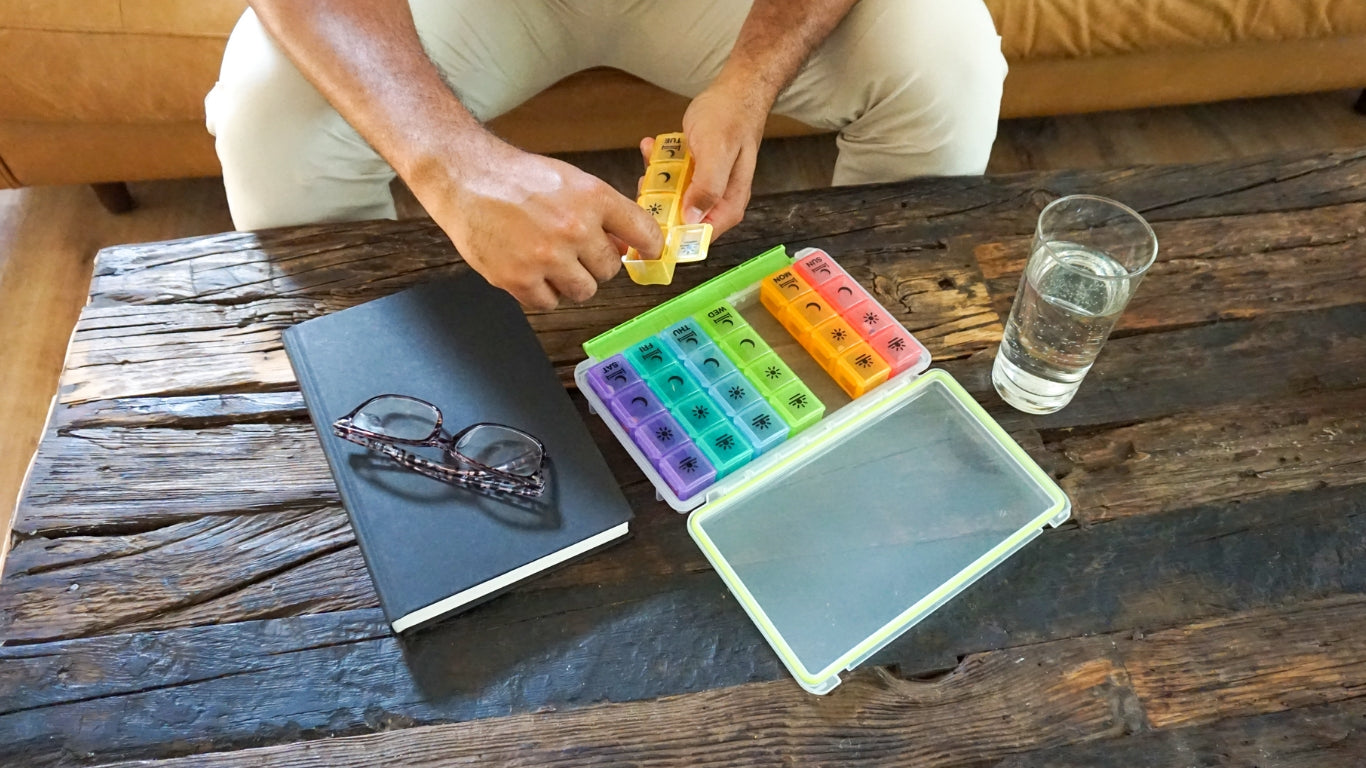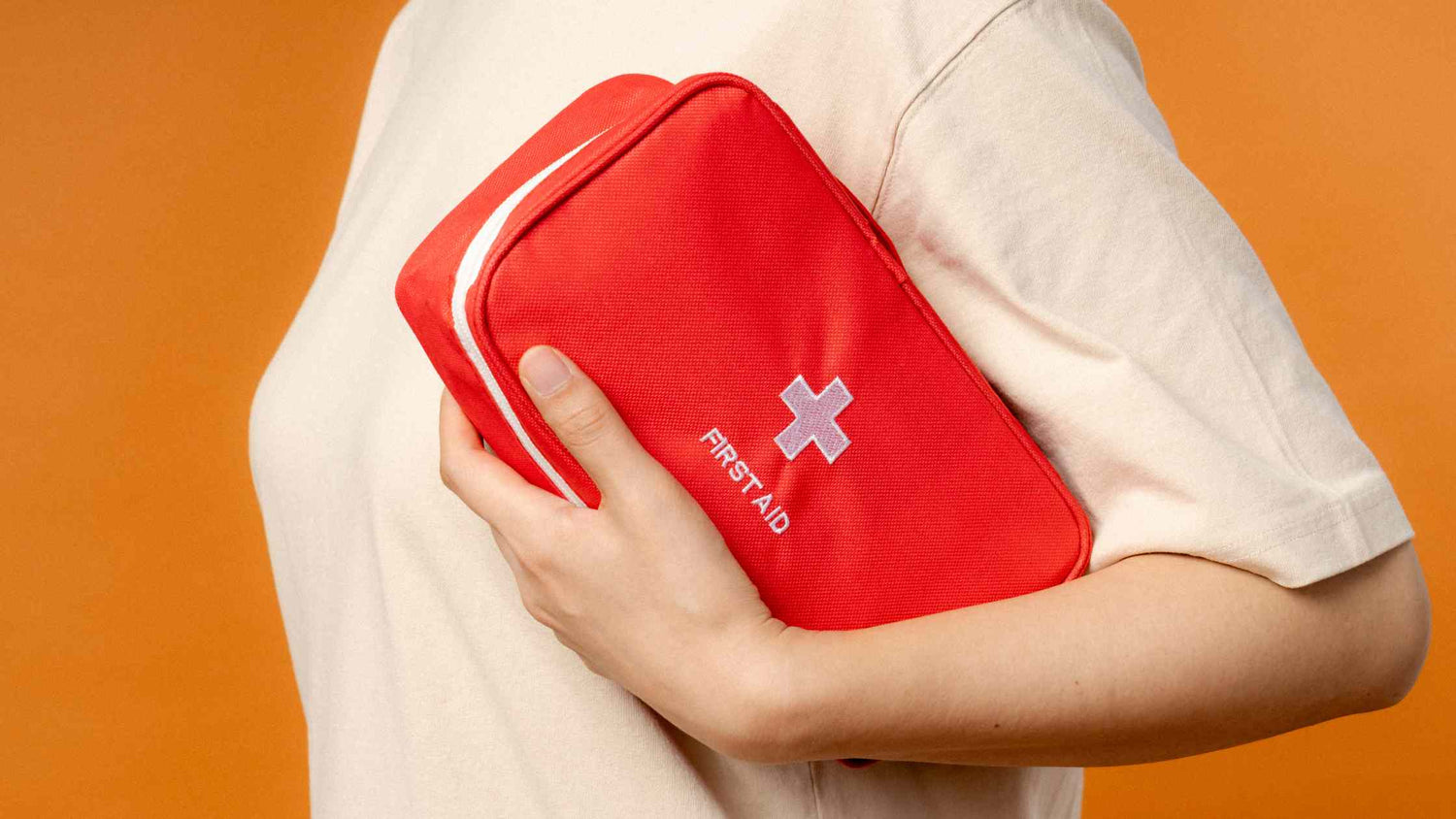Around 70% of American adults report taking at least one medication per day, and an astounding 24% report taking four or more per day, according to Civic Science.1 These numbers are up from a similar report in 2019, where 55% of Americans reported taking at least one and 18% took at least four. So if you’ve been wondering how to optimize your medication management — especially if you are in that 18% that takes four or more — know that you’re not alone. Whether you need to organize your prescriptions in a pill planner or create a master list to improve your daily routine, we’ve got you covered.
When it comes to organizing medications, there are several things you can do to help you remember to take them but also to keep all the important information within reach.
- Use a pill planner. With separate compartments for each day, a pill planner can help take the worry out of remembering whether or not you’ve taken that day’s dose. If you need to remember to take different medications at different times of the day, opt for a pill planner that has separate time slots for morning, noon, and night. Planning for the upcoming week and separating the pills into what needs to be taken at what time of day helps make taking them quicker and easier.
- Make a medication chart. Create a list of which medications you take, when you take them, their doses, what each pill looks like, special instructions for taking them, and any other important information you want on hand. Having that information gathered in one convenient location makes it a breeze to look at if there’s anything you forgot or to quickly grab when you’re on your way to doctor’s visits.
- Create reminders. Whether it’s an alarm that goes off in your phone or on your smart watch or if it’s a sticky note on the mirror, write personal notes that will help you remember to take medications.
- Pre-pack single doses for when you’re away. If you need to take any medications during the day when you’re at work or if you’re traveling for the day or weekend, prepare single-dose packets to keep at your work station or in your purse or pocket for when you’re on-the-go.
- Keep your medications in sight. Place your pill planner or medication bottles in a location you’ll pass by every day. Keeping them in sight acts as a visual reminder. On this note, one thing to remember is that where and how you store medications is important to their effectiveness as well as your safety when taking them. While some require storage in a refrigerator, most are recommended to be stored in a cool, dry place, and out of the reach of children. Make sure to check your medication bottles for any specific storage instructions.
- Make a routine. Take your medications at the same time every day — right after getting out of bed, with your first bite of lunch, or as you turn out the lights at bedtime — to help create that routine where it becomes as ingrained in you as brushing your teeth or turning on your coffeepot.
Medication Safety
Medication adherence, or the extent to which a patient follows their healthcare provider’s recommendations, is extremely important to the effectiveness as well as safety of the patient. After a complete assessment, your doctor has the best advice for your situation to either get you back to feeling healthy or addressing and monitoring your situation. Non-adherence can lead to anything from ineffectiveness of the medication to damage done like worsening of the disease by not taking the medications as prescribed. The American Heart Association estimates that as many as three out of four Americans don’t take medication as directed by their doctor. Whether that’s on purpose or not — forgetting, not buying into a doctor’s medication plan, being afraid of side effects, rising prescription costs, etc.2 — the successful adherence of medication management is something that should be a focus of patients who are taking prescribed medications.
If you take multiple medications at once, talk to your doctor to ensure there are no interferences. Some medications can’t be taken together, so it’s best to double check that the ones you’re taking are okay to combine. Review your medication regimen with your doctor regularly to make sure you’re still taking the right amounts. This is a great time to grab the medication chart that we recommended to make earlier! The Arthritis Foundation also recommends going through one pharmacy and one physician for all of your medications.3 This way, you can avoid errors and mixing medications that shouldn’t be taken together that have interactions with others.
Read instructions carefully on each prescription information sheet or bottle. For example, some can’t be taken while drinking alcohol and some shouldn’t be taken while eating certain foods, so make sure to follow those instructions to limit any negative side effects.
Continue taking medications until you’re told otherwise by your doctor. Certain medications require to you slowly stop taking them. Also, do your best to stay on track and don’t skip doses. If you do miss a dose, get back on track the next day, and also look back at why you forgot — did you dismiss an alarm you set? Did you move your pill planner from its normal spot? Are you on vacation and out of your normal routine? Make a note of why you forgot and make any necessary changes to your routine so you don’t forget again in the future.
Pay attention to your body and how it’s feeling and functioning, especially after receiving a new prescription. If you start to feel off for any reason, contact your doctor. Describe the side effects you’re having and double check your prescription type, dosage, and any other medications you’re taking at the same time. Don’t be afraid to ask questions of your doctor and speak up on your behalf. It’s important to make sure you fully understand what you’re taking, why you’re taking it, and how to take it.
When creating a routine to help you remember to adhere to medication management, think of what your motivation is to either get healthy or manage your condition. Whatever your reason — wanting to live as healthy as you can, working towards goals on your specific health numbers, or being present and active with family — remember those goals as you’ve got medication management and safety in mind. Keep up with your routines and your doctor’s recommendations, and live your healthiest life!
References
- Civic Science. A Growing Number of Americans Report Taking Prescription Medications Daily. https://civicscience.com/a-growing-number-of-americans-report-taking-prescription-medications-daily/
- American Heart Association. Medication Adherence – Taking Your Meds as Directed. https://www.heart.org/en/health-topics/consumer-healthcare/medication-information/medication-adherence-taking-your-meds-as-directed
- Arthritis Foundation. Manage Multiple Medications Safely. https://www.arthritis.org/health-wellness/treatment/treatment-plan/disease-management/manage-multiple-medications-safely





